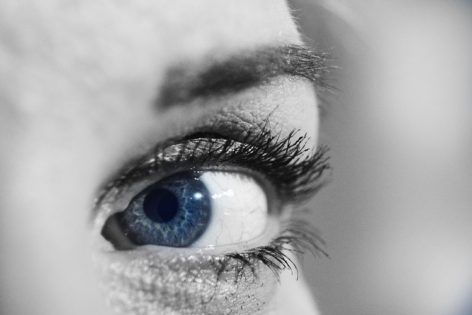
Eyesight restored for Blind after Stem Cell treatment success
04/04/2018


Almost two million people in the UK are living with sight loss

The most common form of sight-loss is age-related macular degeneration (AMD)

AMD affects more than 600,000 people in the UK

Every day 250 people start to lose their sight in the UK

Sight loss affects all ages, but especially the elderly - one in five people aged 75 are affected
In this case two patients with the most common form of sight-loss, age-related macular degeneration (AMD), have regained their reading vision after ground-breaking treatment. AMD causes rapid loss in the central area of vision and affects more than 600,000 people in the UK.
The most common eye conditions in the UK are Age Related Macular Degeneration, Glaucoma, Diabetic Retinopathy and Cataracts.
Though there are dozens of eye conditions – some very common and some much more rare, almost two million people in the UK are living with sight loss.
Research into Stem Cell Treatment
This new research finding now offers hope to thousands, and experts have been united in their support of further study and the breakthroughs that have been achieved.
During this most recent study, a man in his 80s and a woman in her 60s were given a special “patch” of stem cells to repair the damage to their eyes, as part of a small-scale clinical trial. Both went from not being able to read at all, even with glasses, to reading 60-80 words a minute with normal reading glasses.
Douglas Waters, 86, was diagnosed with his AMD back in July 2015, and was treated with stem cells just three months later.
He said: “In the months before the operation my sight was really poor and I couldn’t see anything out of my right eye. I was struggling to see things clearly, even when up-close.”
“After the surgery my eyesight improved to the point where I can now read the newspaper and help my wife out with the gardening.
“It’s brilliant what the team have done and I feel so lucky to have been given my sight back.”
Taking place at Moorfields Eye Hospital and University College London, the treatment involved surgeons engineering a patch of tissue derived from stem cells and inserting it under the retina. This is the part of the eye that registers an image, similarly to a digital camera chip.
The retina is found at the back of the eye, formed from several layers. AMD damages the part of the retina which separates blood vessels from the layer of nerves. In this new stem cell treatment, researches grew stem cells and turned them into a perfect copy of this part of the retina. This new treatment could be available on the NHS within as little as 5 years.
But this may be only the tip of an iceberg in terms of eyesight related treatments with stem cells.
Professor Anthony Hollander, of Liverpool University, said: ‘The UK should be very proud of its long-term investment in stem cell research and the benefits are starting to come through.”
Meanwhile, George Freeman, Minister for Life Sciences, said: ‘This treatment is a sign of the UK’s world-class life science sector and the potential of the NHS to be a partner in research and innovation.’
Protect Their Future Health
If you want more information on how you could bank your children’s baby teeth for potential future therapeutic use, have a chat to one of our team or download our guide to stem cell banking.
Keep up to date with the latest developments and news from BioEden surrounding stem cell therapy for the treatment of sight loss.

04/04/2018

21/12/2016

15/08/2016

29/09/2015